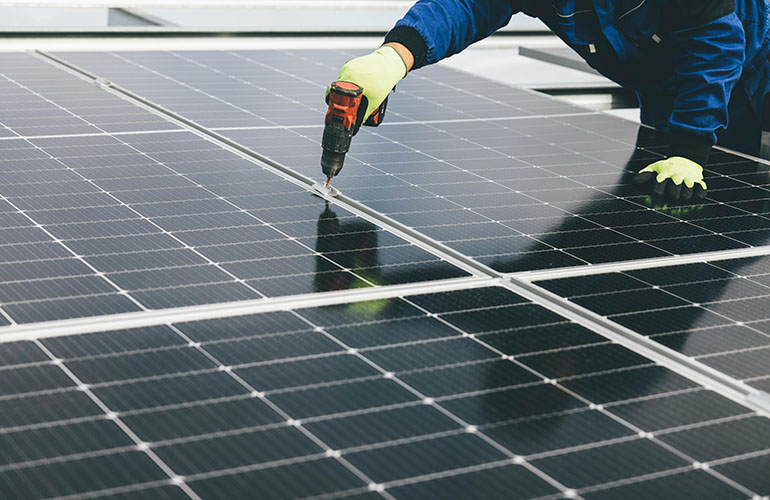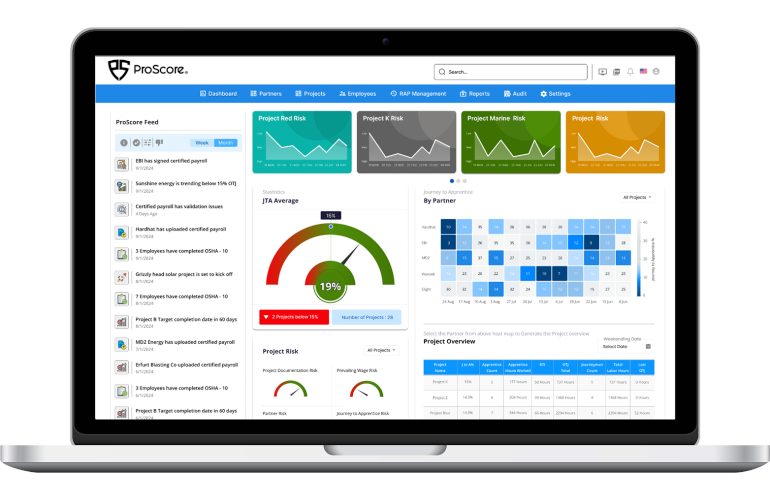Siting report finds Maryland can meet state solar goals with available brownfields and roof space
The Chesapeake Conservancy’s Conservation Innovation Center (CIC) released a new report: “Optimal Solar Siting for Maryland: A Pilot for Baltimore County and City.” Using geospatial analysis, the report identifies optimal solar sites and answers the key question: Are enough optimal sites available to meet Maryland’s renewable energy goals for solar energy?
The analysis results showed Baltimore County and City offer extensive opportunities for solar placement on degraded lands and underutilized industrial sites, on rooftops of commercial, industrial and residential buildings, and for the development of solar parking canopies.
Maryland is one of 30 states in the United States with a Renewable Portfolio Standard, a mandate to increase electricity production from renewable energy sources. Maryland’s mandate requires 50% of electricity sold by utilities to come from renewable sources, with 14.5% from solar. To meet this goal, the state will need six-times the current solar energy production. Siting of solar energy development is an increasing concern, given the rapid increase in solar energy capacity required.
Solar installations range from small rooftop photovoltaic systems and medium-sized distributed generation installations that use energy locally and feed excess energy back to the grid, to large ground-mounted installations that sell energy directly to utilities. The Governor’s Task Force on Renewable Energy Development and Siting estimates that the land needed to meet the state’s RPS goal will require between 7,000 and 35,000 acres across the state.
“This report is a timely reminder we can make real progress on our greenhouse gas reduction and environmental protection goals for a win-win with smart solar siting policies,” said Secretary Ben Grumbles, Maryland Department of the Environment and chair of the state’s Climate Change Commission. “We can expand our state’s homegrown clean and renewable energy supplies by utilizing rooftops, brownfields and waste sites while avoiding prime farmland and ecologically sensitive lands and forests which also deliver clean air and water to Marylanders.”
“Our analysis of solar energy development opportunities sought to identify enough sites to produce Baltimore County and City’s share of the state’s Renewable Portfolio Standard solar goal. Based on energy consumption, this would be 1,967 GWh/year of electricity, about 18% of the statewide goal of 9,000 GWh/year in electricity from solar,” said Chesapeake Conservancy’s Conservation Innovation Center VP of Technology Susan Minnemeyer. “We found far more optimal sites than needed — enough to generate 22,789 GWh/year of electricity. In fact, just 8.6% of the optimal sites would need to prove viable to meet Baltimore County and City’s share of solar energy needs on optimal sites alone. For both optimal and preferred ground-mounted sites, only 7% of sites would need to be viable.”
“Our analysis demonstrates significant opportunities to scale up solar energy development through optimal siting in Baltimore County and City, making use of rooftops, parking canopies, and degraded lands to grow Maryland’s solar electricity generation,” continued Minnemeyer. “Providing incentives for solar energy development on optimal sites may be one of the best ways to minimize the amount of land needed for solar and avoid potential adverse impacts of development.”
“Although we strongly support renewable energy, our members were concerned from the get-go that without siting guidance or incentives, farm and resource land would be the primary target for these land-intensive projects,” said Teresa Moore, executive director of the Valleys Planning Council, who commissioned the study. “And that is exactly what we have seen in Baltimore County. Almost all the applications for the first three years of the community solar pilot program have been on prime farmland, and there’s little to no activity on optimal sites. We’d like to see Maryland follow the example of states like New Jersey, where optimal solar sites have been mapped statewide and a ranking system has been incorporated into solar project reviews. This helps achieve other goals included in Maryland’s solar legislation calling for job creation and benefits to low and moderate income residents, in addition to avoiding conflicts with long-established programs and policies to protect our best farm and forest lands.”
Methodology
The methods set out to first identify all potential solar sites — those that meet legal (zoning) and technical criteria for allowing solar energy development. Next, potential solar sites were ranked on a range of environmental, equity and efficiency criteria to determine optimal siting. Optimal sites were either in the built environment — on rooftops, parking lots and degraded or contaminated lands.
The CIC also identified a second tier of locations, preferred ground-mounted sites, that would avoid land use tradeoffs with agriculture or environmentally valuable lands. Land parcels larger than five acres that could support at least 1 MW of solar energy capacity were analyzed. Parcels with a high portion of forest cover or on targeted ecological areas — lands identified by the state as high conservation priority — were screened out to avoid adverse environmental impacts. Next, parcels were evaluated for prime farmland soils, and those mainly on prime soils were screened out. The remaining sites for preferred ground-mounted solar are on marginal soils without forest cover and have low ecological importance, allowing for solar development with the fewest land use tradeoffs.
News item from the Chesapeake Conservancy
<!–
–>
Original Source: https://www.solarpowerworldonline.com/2020/10/maryland-solar-siting-report/














